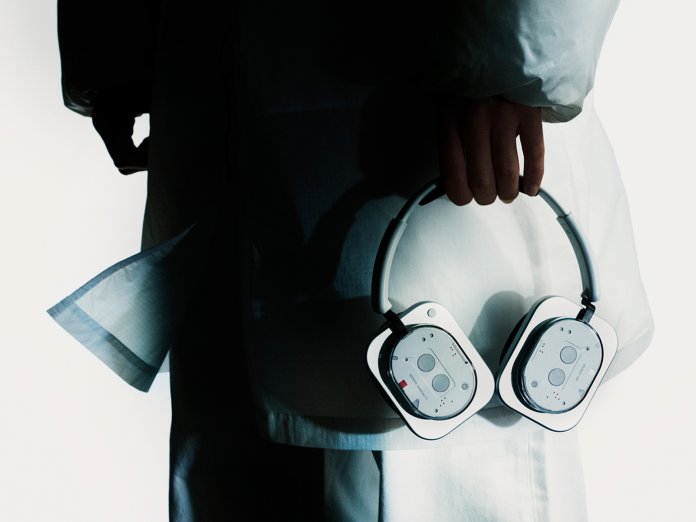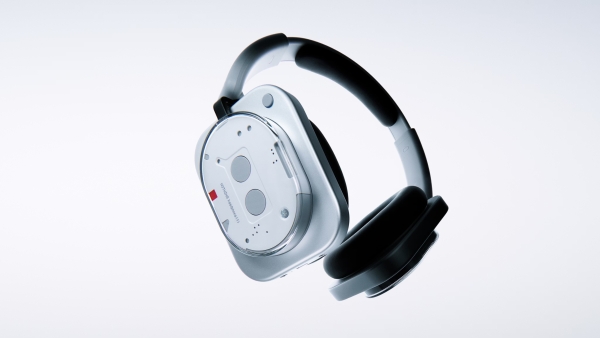Overview
Nothing has finally jumped into the over-ear / full-size noise-cancelling headphone market with the Headphone (1). It’s their first “big cans” offering, following earlier success with earbuds. They partnered with KEF, a well-regarded UK audio specialist, for the sound tuning. TechRadar+3KEF US+3SoundGuys+3
The Headphone (1) sells itself on a mix of strong specs, bold design, a lot of customisation, and some trade-offs. If you like features and statement style but are a bit more forgiving in perfection, these are a tempting package. But there are quirks.
Key Specs & Features
To start, here are the essentials:
| Spec | What you get |
|---|---|
| Drivers | 40 mm dynamic drivers, custom tuned with KEF KEF US+2SoundGuys+2 |
| Frequency range | 20 Hz – 40,000 Hz KEF US+1 |
| Connectivity | Bluetooth 5.3 (supports multipoint / dual-device), USB-C, 3.5 mm wired connection included SoundGuys+2PhoneArena+2 |
| Codecs | SBC, AAC, LDAC are supported SoundGuys+2PhoneArena+2 |
| Noise cancellation / transparency | Adaptive ANC with multiple strength levels; transparency mode works decently; physical controls for toggling modes KEF US+3TechRadar+3SoundGuys+3 |
| Battery life | Up to ~35 hours with ANC on; up to ~80 hours with ANC off (numbers vary with codec & usage) TechRadar+3SoundGuys+3KEF US+3 |
| Quick charge | 5 minutes charging gives something like ~5 hours playback (ANC off) SoundGuys+1 |
| Weight / Comfort | Around 329 g, with memory foam ear-cups; good clamping force; headband has some padding but some reviews note it's a bit thin in places. SoundGuys+2The Guardian+2 |
| Water / Dust Resistance | IP52 rating (light dust and water resistance) — good for sweat / light rain, though not for heavy exposure. SoundGuys+1 |
| Design & Controls | Transparent “caps” / see-through aesthetic; a roller (wheel) on the right cup for volume, a paddle / switch for track skip, physical on/off toggle; a button that can be customised. KEF US+3PhoneArena+3SoundGuys+3 |
What It Does Well
These are the highlights — what makes the Headphone (1) shine.
-
Design & Aesthetic Statement
If nothing else, these headphones attract attention. The semi-transparent portions reveal internal components (or at least look like they do), and the shape / finish is bold. If you enjoy gadgets that are also fashion / design pieces, these hit that mark. SoundGuys+2PhoneArena+2 -
Rich Feature Set
Very few in this class give you all of: USB-C wired audio, 3.5mm jack, high-res LDAC, dual-device Bluetooth, spatial audio with head tracking, good app support with EQ customisation. It’s a loaded package technically. SoundGuys+2PhoneArena+2 -
Battery Life
The real world battery life with ANC on is solid, often exceeding the claimed 35 hours in many tests. With ANC off, the potential for up to ~80 hours is impressive if you can live with wire-free usage and occasional charging. SoundGuys+2KEF US+2 -
Good ANC + Transparency
While not perfect, the ANC is very usable. It significantly cuts down low-end and midrange ambient noise (traffic, engines, chatter). Transparency mode works well enough for letting in ambient sound; though there are quirks (your own voice may sound boomy to you etc.). SoundGuys+2TechRadar+2 -
Physical Controls
Many people dislike touch-controls for headphones because they can be unreliable or accidentally triggered. The Headphone (1)’s use of real, tactile controls (wheel, switch, buttons) is widely praised. PhoneArena+2SoundGuys+2
The Quirks / What Might Be a Compromise
No product is perfect, and these headphones come with trade-offs. Depending on your priorities, some may be deal-breakers.
-
Sound Out-of-the-Box Needs Tweaking
The default tuning is described by many reviews as mid-forward (vocals present, clarity), but not massively exciting in the highs, some unevenness, a bit more bass than some prefer. If you’re an audiophile or want a very flat / reference sound, you’ll probably spend time in the EQ settings to get things exactly to your taste. SoundGuys+1 -
Weight & Comfort for Long Sessions
At 329g, these are not lightweight. Some people report that after long hours (say during travel or headset-on duty) the weight and the padding (particularly in the headband) become noticeable. If comfort and wearing them for many hours straight is essential, that’s something to test in person. The Guardian+1 -
ANC vs Sound Trade-off
When ANC is active, there are some reviewers who say the sound becomes slightly narrower, or loses a bit of clarity—some “punch” and “air” get a bit suppressed. For music where detail and dynamism in the top-end matters, this matters. If you often use ANC, be aware you’re trading something. The Guardian+2SoundGuys+2 -
Not Truly “Flagship Premium” in Some Areas
Compared to entrenched top competitors (Sony, Bose, Apple), these may not surpass them in certain refined metrics: ultra-fine detail, finishing, some materials, perhaps replacement parts / long term support. For example, the replaceability of ear pads is a question, and while they are removable, the availability (at least at launch) of replacements is uncertain. WIRED+1 -
Looks Are Bold, Which May Not Be to Everyone
As expected, the transparent design and large earcups are eye-catching. Some people love that. Others might find them too showy or simply prefer something more understated. Also, lighter colors (white / silver) draw more attention (and will show dirt etc.). The Guardian+1
Who They’re Best For
Putting together strengths and compromises, here are the types of users who will probably get the most out of the Nothing Headphone (1), and those who might want to consider alternatives:
| Good fit if you… | Maybe look elsewhere if you… |
|---|---|
| • Like design / aesthetics as much as sound. Want something that stands out. | • Want ultra-subtle / minimal / understated gear. |
| • Appreciate physical controls, and want tactile feedback rather than touch only. | • Hate heavy gear or have a small head / lightweight sensitivity. |
| • Want long battery life, multiple connection options (wired & wireless), spatial audio etc. | • Prioritize top-tier ANC performance or absolute audio fidelity out-of-the-box. |
| • Don’t mind tweaking EQ or adjusting to get your preferred sound signature. | • Want flat / reference sound with minimal adjustment needed. |
| • Use them for mixed activities: commuting, some gym / outdoors (light), travel, office etc. | • Need ruggedness / high-water protection, or extremely light headphones for extended daily usage without fatigue. |
Verdict
All things considered, the Nothing Headphone (1) is a very strong debut over-ear product, especially given the competition. It hits many marks:
-
Great battery life
-
Very usable ANC
-
Rich feature set and connectivity
-
Bold and memorable design
-
Physical controls you actually want to use
But it also comes with quirks: it’s heavy, the sound isn’t perfectly balanced with ANC on, and if you don’t care about looks or you want something very subtle, some competitors might appeal more.
If I were you and looking for premium wireless over-ears in this price/feature space, I'd definitely have these on the shortlist—but I would try them in person, especially for comfort, and be ready to dive into the EQ settings to get maximum satisfaction.
Key Competitors
-
Sony WH-1000XM5 / XM6
-
Bose QuietComfort Ultra Headphones
Spec-by-Spec & Feature Comparison
| Feature | Nothing Headphone (1) | Sony WH-1000XM5 / XM6 | Bose QuietComfort Ultra |
|---|---|---|---|
| Price point | ~$299 MSRP Tom's Guide+2Tom's Guide+2 | Higher (US$ ~399-450) Tom's Guide+2Tom's Guide+2 | Even higher (~US$429) Tom's Guide+2SoundGuys+2 |
| Battery life | Up to ~35 hrs with ANC on; up to ~80 hrs with ANC off (varies by codec) RecordingNOW.com+3SoundGuys+3Tom's Guide+3 | Sony XM6: ~30-40 hrs with ANC on/off in typical cases; XM5 similar in many real-world tests RecordingNOW.com+2Tom's Guide+2 | Bose QC Ultra: significantly less life (≈ 24 hrs with ANC) Tom's Guide+1 |
| Weight / Comfort | Heavier (~329g) which may mean more fatigue over long sessions; decent padding but harder head clamp reported by some Tom's Guide+2RecordingNOW.com+2 | Sony models tend to be lighter and more refined for long wear; better ergonomics generally noted HomeTheaterReview+2SoundGuys+2 | Bose QC Ultra is lighter than the Nothing, with more plush cushioning etc. SoundGuys+1 |
| Noise Cancellation (ANC) | Strong, usable in many environments; probably “above average” but not the absolute top in windy / harsh ambient noise; some loss of clarity with ANC engaged. SoundGuys+2Aaron x Loud and Wireless+2 | Sony is generally considered the benchmark: excellent ANC, especially for lower-frequency, engine noise, etc. Performs better in many “difficult” noise situations. HomeTheaterReview+2SoundGuys+2 | Bose has a long history with some of the best ANC. QC Ultra is among the top in blocking ambient noise, especially in lower and middle frequencies. SoundGuys+1 |
| Sound / Out-of-Box Tuning | Darker signature by default; heavy bass and lower mids, treble and vocals may feel recessed unless adjusted with EQ. Good “fun” listening once tweaked. SoundGuys+2Aaron x Loud and Wireless+2 | Sony tends to have a more balanced, polished sound out of the box; more “neutral” / more familiar tuning that needs less user tweaking. SoundGuys+2HomeTheaterReview+2 | Bose also leans toward more balanced, premium sound; tends to preserve clarity, mids, and treble a bit more without needing huge adjustments. SoundGuys+1 |
| Features / Extras | Very generous: USB-C wired audio mode, 3.5 mm jack, LDAC support, adjustable EQ (parametric), environmental / ambient / pass-through modes, IP52 rating, physical controls (roller, switch, etc.) SoundGuys+3Aaron x Loud and Wireless+3Tom's Guide+3 | Sony has some advanced software features (adaptive modes, app customisation, etc.), low-latency modes in newer models, well-tuned microphones, etc. But often lacks water resistance rating. SoundGuys+1 | Bose adds premium ANC, immersive audio (“immersive mode” etc.), good spatial audio, good mic performance, traditional Bose comfort. May lack some unique touches like transparent design or USB-C audio (depending on region/model). SoundGuys+2Tom's Guide+2 |
What Each Does Best & Trade-Offs
| If you care most about... | Best Pick | Why / What You Sacrifice |
|---|---|---|
| Top-tier noise cancellation (especially for travel, airplanes, noisy public transport, windy outdoors) | Sony WH-1000XM5/XM6 or Bose QuietComfort Ultra | You’ll pay more; battery life might be less (especially with ANC at higher strength); possibly fewer rugged / water-resistance features. |
| Long battery life + versatile connectivity + value | Nothing Headphone (1) | Sound out of box may need tweaking; heavier weight; may not match the ultra-refined finish or ANC of the Sony/Bose flagships. |
| Immediate sound quality, minimal fuss | Sony or Bose | You’ll pay more, and design features / “cool factor” are more restrained; less uniqueness in appearance. |
| Physical controls, design / uniqueness | Nothing Headphone (1) | You give up some refinement in noise cancellation at extreme conditions; bulk / heft / maybe less polish in fit. |
| Comfort over long sessions | Likely Sony or Bose | Nothing’s weight and clamp might become tiring after many hours; you’ll need to test in person. |
Final Thoughts: Which Should You Pick?
Here are some “user-profiles” to help you decide:
-
If you want a stylish, feature-rich headphone and don’t mind tweaking → Nothing Headphone (1) is a great value. Lots of bang for buck: decent ANC, excellent battery, rich features. If you like the look & enjoy tuning EQ / personalising sound, it’s very compelling.
-
If you travel a lot / want excellent isolation → Sony (or Bose) edges it. They’ve been doing this longer, and in harsh noise environments, they still tend to perform better with ANC and microphone clarity.
-
If comfort all day / long sessions matter → Again, Sony / Bose probably wins: lighter, more refined cushioning, better padding etc.
-
If price is a concern → Nothing gives much of the premium feel & many premium features for less money. It’s the strongest contender “just under top-tier” currently.


